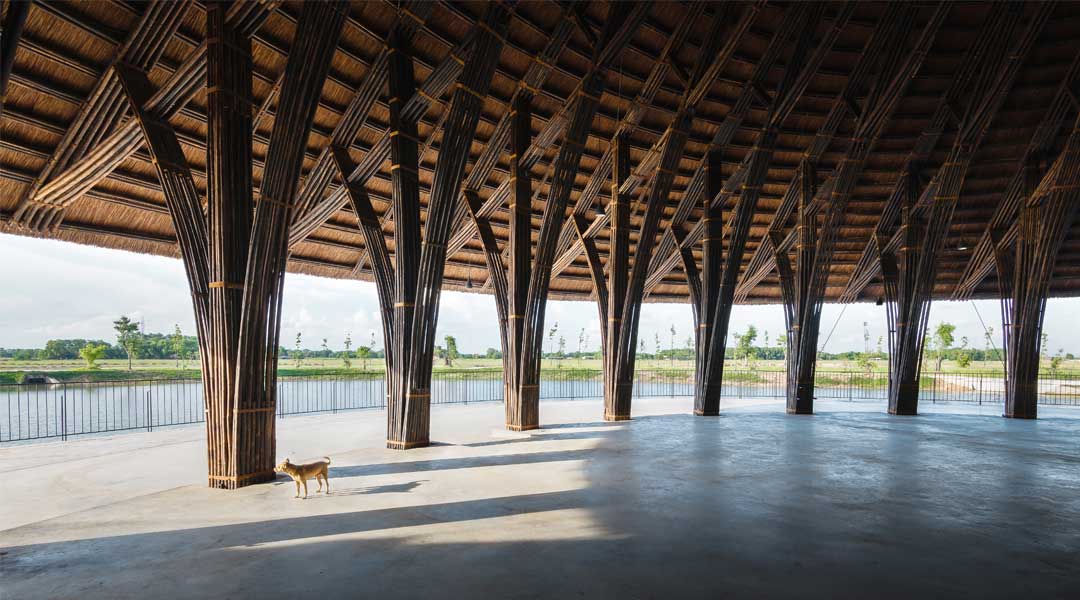
Roots and Shoots: VTN Architects on bamboo as a primary material
The Vietnamese proverb “Tre già măng mọc” translates to “As bamboos grow old, young shoots spring up.” It is a metaphor for how Vietnam as a country will always endure; a younger generation will grow up to continue what their elders left behind. It is this material that VTN Architects (previously Vo Trong Nghia Architects) inherited, from its rich history as an integral part of the traditional Vietnamese way of life, to first use it as a building material over a decade ago. While also popularly known for its ‘green’ architecture, the firm has equally been pushing the possibilities with this plant to become a leading proponent of bamboo architecture in Southeast Asia. Such has been VTN Architects’ focus on this material that, along with the conventional typologies listed under the projects section of its website, bamboo architecture gets its own category.
BluPrint spoke to the principal himself, Vo Trong Nghia, and the senior architects at the VTN Architects’ office in Ho Chi Minh City in late February 2018 to find out how their bamboo designs have matured over the years. It is clear that the number and scale of bamboo projects they procure are growing as quick as the bamboo they harvest. Scaled bamboo stick models for their upcoming projects line one entire wall shelf of the office. Perched in the middle is a prohibition sign with a camera icon to barring the employees and visitors from taking photos of working bamboo design ideas and detail explorations. The praise VTN Architects have received from the global exposure of their bamboo projects has also generated a slew of copyists, whom they are vehemently keen to protect their designs from. Conversely, it is a testament to their fresh lines of inquiry with this ancient material that their projects have significantly contributed to the contemporary vernacular without them appearing tokenistic or exotic.
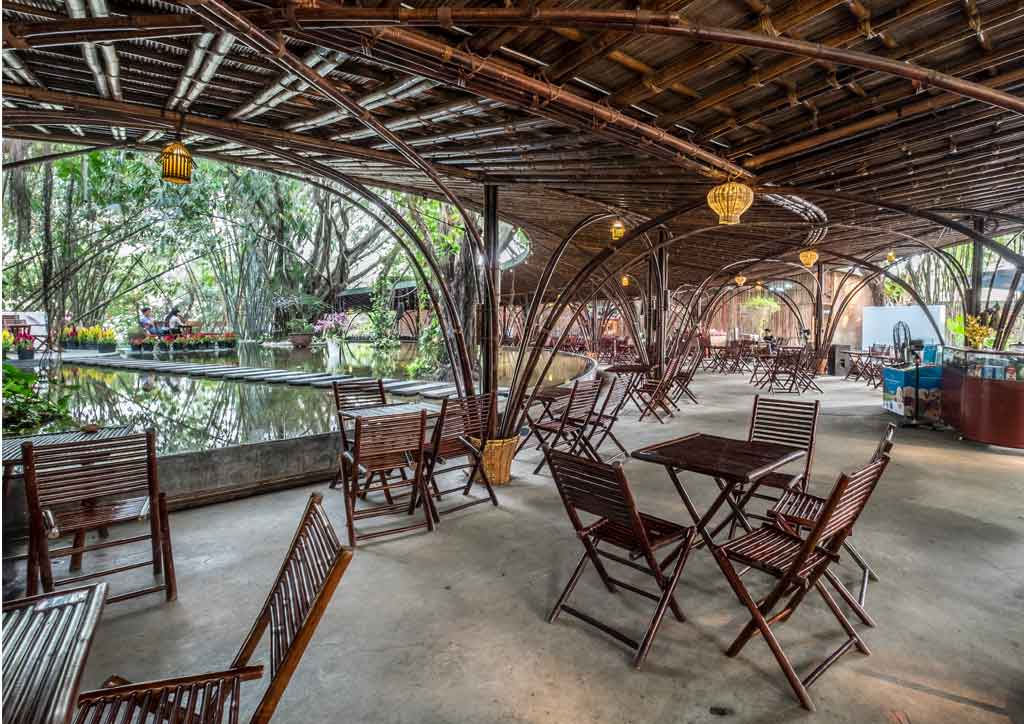
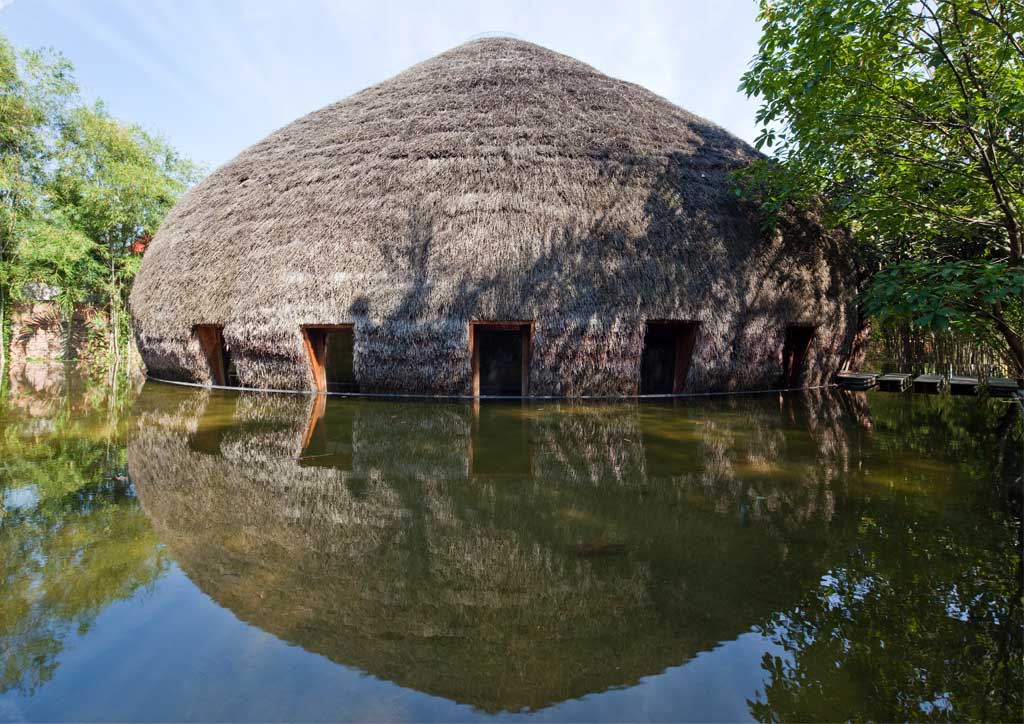
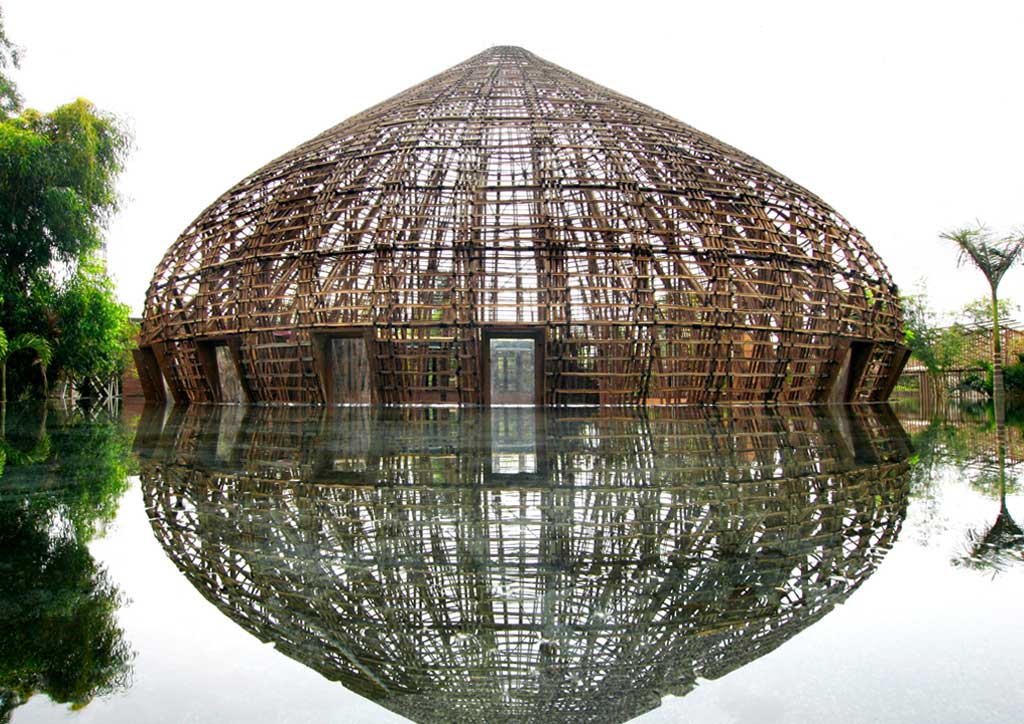
We also caught up with VTN Architects’ partner, Takashi Niwa, after his talk on the power of plants in architecture at Anthology Festival at Intramuros, Manila in early February 2018 to learn specific insights into working with bamboo as we take a look at a few of their seminal bamboo projects.
BluPrint: How did VTN Architects’ exploration into bamboo become such an obsession for the practice?
Takashi Niwa: The firm actually began with a bamboo project in 2006. When Vo Trong Nghia started an office in Ho Chi Minh City, he found one Japanese investor to build and open a café together. So he designed the concept by himself using bamboo as the main material. It was the Wind and Water Café in Binh Duong province. At the time there were no professional bamboo workers, so he brought friends and friends of friends, from his hometown in central Vietnam to Ho Chi Minh City to work together. We then developed a design and build process step by step through all our bamboo projects. Now we have around 100 bamboo workers who not only work in Vietnam but also abroad. Most of the local workers have their own rice fields in their respective hometowns. The number of workers on a project depends very much on the schedule of managing their rice fields. At the moment, there’s one team in Panama, one team in China, and one team in Vietnam.

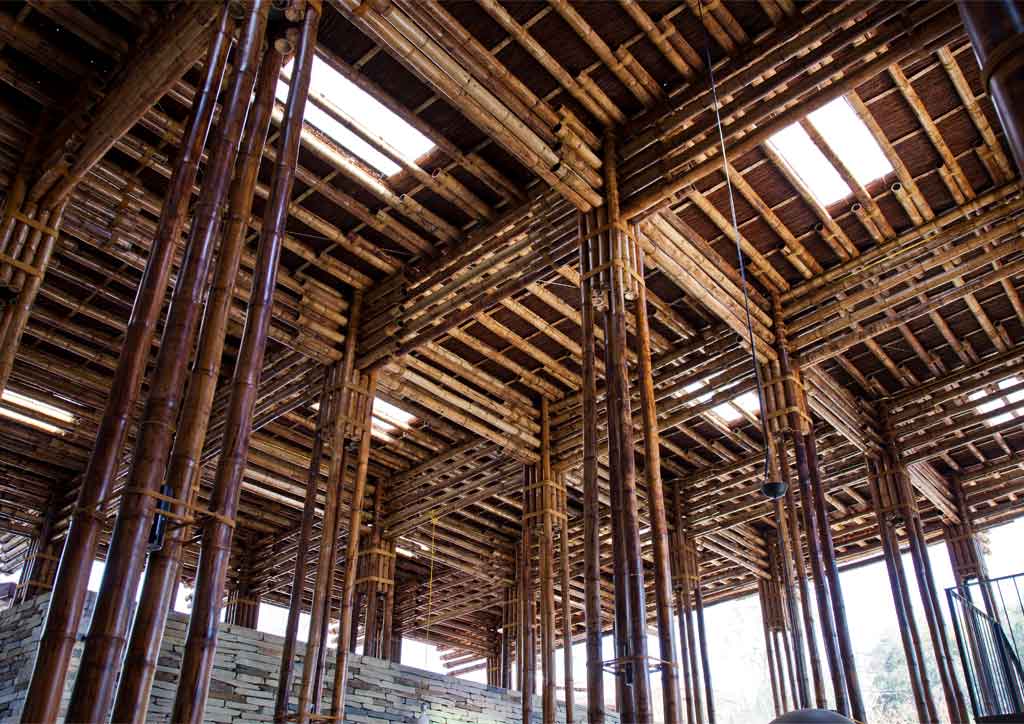
Are you in regular consultation with the teams that go to work in other countries to develop bamboo projects? As architects, do you also provide expertise to the clients and local architects in other countries?
We usually work with clients and engineers directly. Sometimes the local architect invites us to bring our specialty to a project. For the project in Panama, we are doing a villa complex. An American architect us doing the main building and we are doing the pavilion around it. So there are many types of collaborations for projects abroad.
The firm has had a lot of experience experimenting with bamboo as a building material and, as architects, you must have extensively researched how bamboo was traditionally joined together. What new techniques or innovations were you able to create with this material that has not been seen before? Were you able to push bamboo to its limits?
Firstly, bamboo has a limited size. Also, bamboo is very cheap. In Vietnam, one piece of bamboo is $1 or $2.

And it grows quickly.
It does. But bamboo is also very strong. So if we make a simple small-scaled pavilion-like structure out of bamboo, we may only need around 200 pieces of bamboo, which is enough to make the minimum structure. We can find long lengths of bamboo to make this structure. But because one pole of bamboo is not beautiful itself, it looks very cheap if we use the minimum amount of bamboo. It’s very primitive. People are attracted to the beauty of bamboo when they are in a bamboo forest setting. If our designs use a particular amount of bamboo, a similar beauty can be shown. At the same time, if there are too many elements, bamboo structures have more redundancy. We actually don’t need much bamboo for a space because bamboo is very strong. We need to consider what amount of bamboo is enough to show its structural qualities and its beauty. If we make a structure like in this way, it can be very cheap, but we cannot offer quality to the user. At the same time, bamboo is easily damaged by water. Once the bamboo comes into contact with water, it gets damaged. So, if we combine bamboo elements together, we can make the structure more stable and it can last a very long time. Even if water gets into the bamboo, the multiple bamboo elements together can retain its strength.
So we usually maintain the structure every three years, but if, within three years, there is a major problem, we can either maintain or replace the bamboo. As long as the users want to maintain the building, they can use bamboo as a structure, and it becomes the aim for the user for its upkeep. Even if the structure needs to be removed, our design usually uses the same structure so it is very easy to replace.
For as long as they want to use it, they are able to move it. It’s very similar to timber structures. In Japan, the oldest structure is almost 1,300 years old, but every 100 years they undertake major maintenance works. For the foundations, they cut new timber to replace the old structure. The same can be done for bamboo.
Are you able to leave the craftsmen or the builders to independently construct, disassemble, and reconstruct the bamboo structures? As an architect, do you step back if you teach them once, and then they can do it on their own?
Yes.
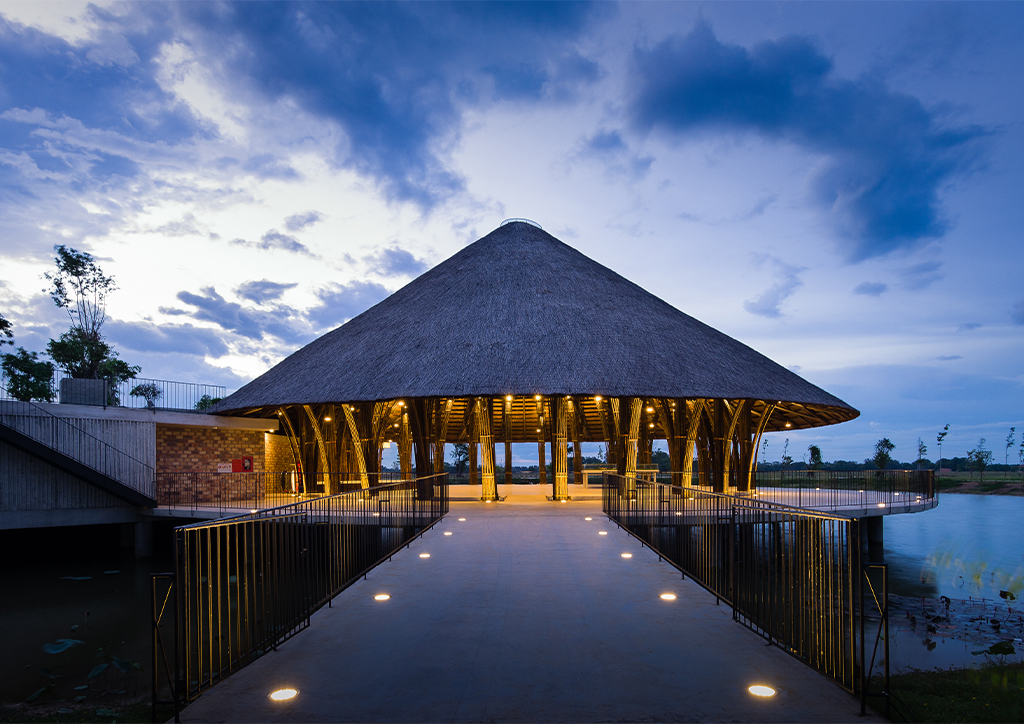
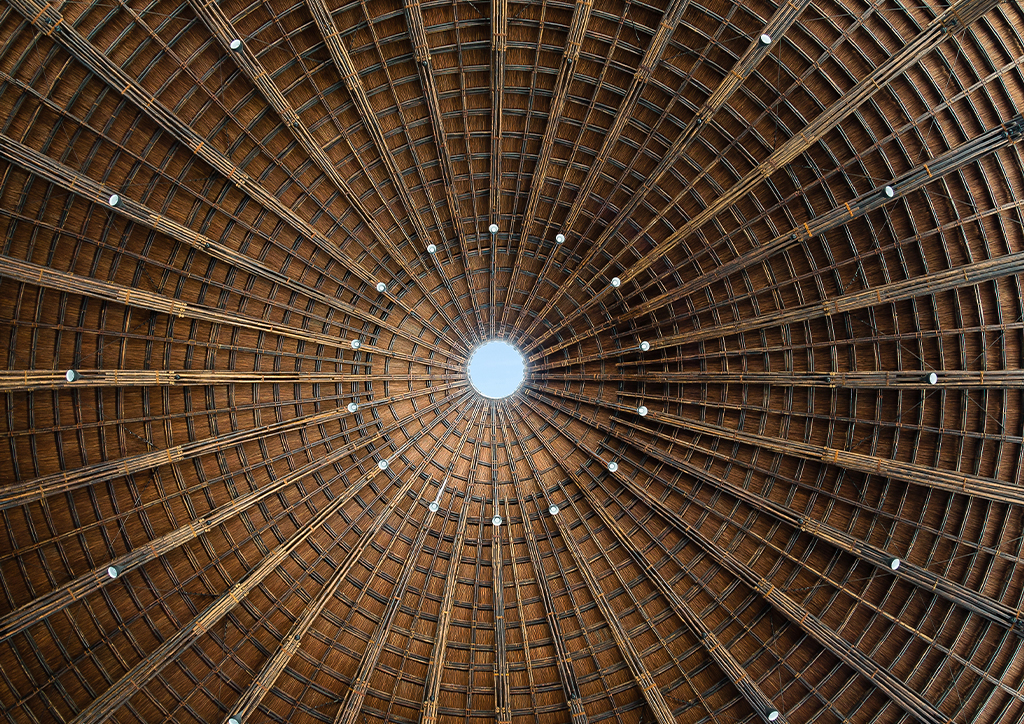
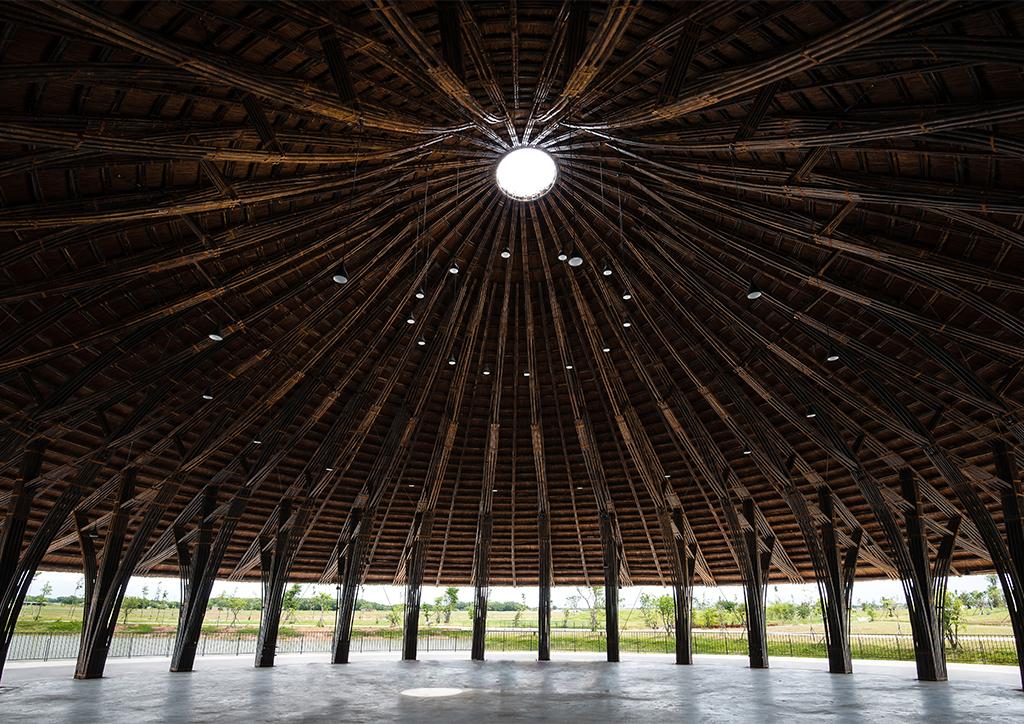
We’ve noticed that there are two types of bamboo used for the projects VTN Architects have designed—one uses bamboo that can bend to form curves and one that is straight. What are the names of the two species?
The bamboo that us bendable is locally called ‘Tam Vong’ (Latin name: Thyrsostachys oliveri Gamble), and the straight one is called ‘Luong’ (Latin name: Dendrocalamus barbatus).
Do you treat the bamboo in any way? You mentioned that bamboo is affected by water, so are there any veneers, finishes, or varnishes that you put onto the bamboo to ensure it lasts longer?
Bamboo is also vulnerable to a specific insect. When it’s dry they are susceptible to powderpost beetles. They get inside, lay many eggs, and produce lots of powder around where they reside. They make small holes (0.5 millimeters) on the bamboo and they pour dust out from these holes.
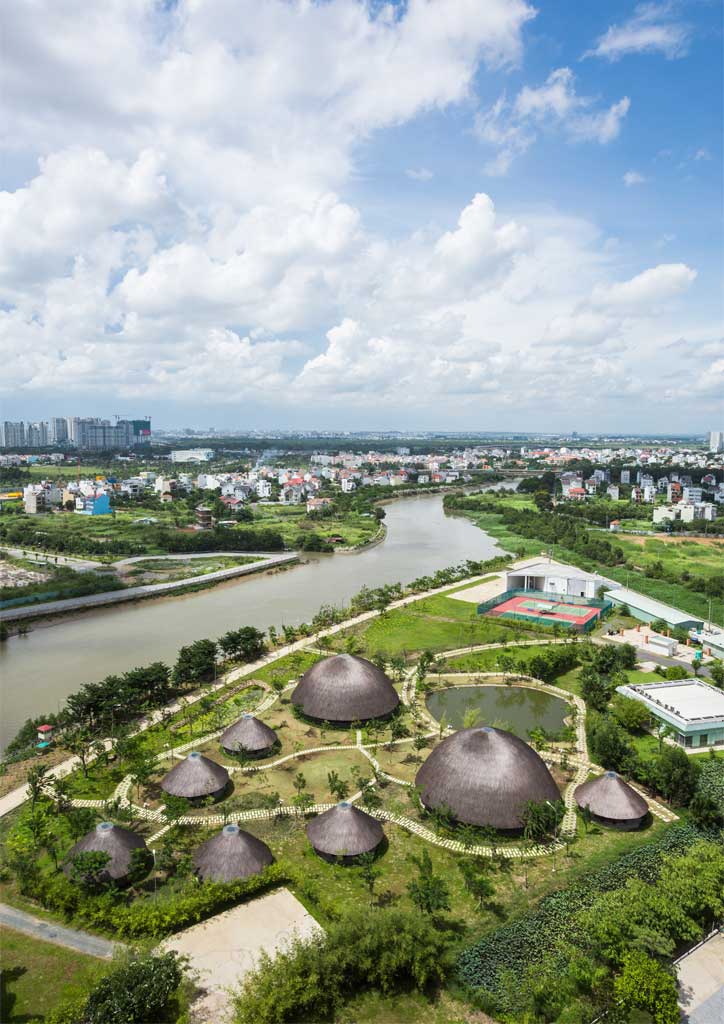
The powderpost beetle does not only live in bamboo but in timber, too. In Japan, when we look at older buildings, we can see the spots where the beetle has gone. But this beetle only eats fresh bamboo or fresh timber. So after three or four years, they move to new trees or timber. For thick structures, like timber structures, this is usually not a problem, as they don’t go very deep. This is not a problem for timber construction, but for bamboo, it’s a problem as the material structure is thin. To prevent this, we put the bamboo into the water to speed up the aging process. So when bamboo rots its chemical make up changes so the beetle will no longer eat toughened bamboo, as it’s not as tasty! (Laughs)
Treating bamboo in this way is the traditional knowledge of Vietnamese craftspeople, because of all of the baskets, chopsticks, and many other products they make from bamboo. Many villagers put bamboo into the water and they then use it after three to six months. We treat bamboo based on their knowledge but we add one more step—smoking. When we remove bamboo from the water the smell is not nice and the skin is very dry as the oil escapes. So we smoke it for two weeks to coat the outside and dry, so we can then replace the oil lost.
What kind of oil do you use?
When we smoke the bamboo we burn rice husks for the smoking, which contains oil. So this automatically binds with the bamboo.
After smoking, we polish the outside of the bamboo to make it shiny. The combination of putting bamboo in water and smoking it makes it last longer.
VTN Architects predominantly uses either plants or bamboo in all of the projects. Are there any other materials the firm is exploring right now and would like to explore in future projects?
We are very interested to find new materials—new, local materials. We would like to discover another local material to use for our projects. Recently, we have worked with pottery and bricks. We are trying anything available around the site. Also, we are open to any ideas that the client might have.
Thank you for your time.![]()
This article was first published in BluPrint Volume 3 2018. Edits were made for BluPrint online.
Images courtesy of VTN Architects
READ MORE: Plants in architecture improve cities, says Vo Trong Nghia partner


